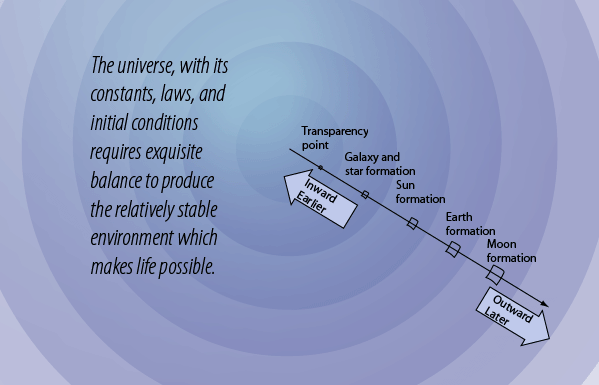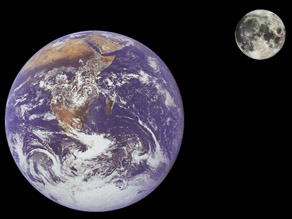How did the Moon form and why is it crucial to life?

It would seem simplest to presume that the Earth and its Moon were simply two concentrations of matter from the protoplanetary disc around the Sun that were near enough together to orbit each other. But the studies to date suggest a much more extraordinary scenario. Also extraordinary is the suggestion by Ward and Brownlee that the presence and nature of the Moon was essential for the development of advanced life on the Earth.
 | The Moon has only about 1/80th the mass of the Earth, and seems small when you look at the Moon and Earth to scale.Then when you add the perspective of scaling their relative distances (below) it seems surprising that the Moon would have significant consequences for the development of life on Earth. This if further accented when you consider how small both of them are compared to the Sun. But surprisingly, the Moon's role in stabilizing the Earth's rotation axis may have been crucial to the development of life. |

The Earth's orbital tilt angle or "obliquity" with respect to the ecliptic plane is 23.5° and conservation of angular momentum demands that it maintain that direction in space unless acted upon by an unbalanced torque. If the Earth were perfectly spherically symmetric, then external gravitational forces could not exert a torque on it because the nature of the gravitational attraction would be equivalent to the action on a point mass at the center of the Earth. But the Earth is an oblate spheroid, with larger diameter at the equator and the mass distribution is not exactly radially uniform, so torques are possible. Gravitational forces also produce tidal bulges which distort the spherical symmetry. But if the tilt angle changed, it could cause major climatic changes.
Ward and Brownlee's assessment of the Earth's spin axis stability is as follows. "This angle is nearly constant for hundreds of millions of years because of gravitational effects of the Moon. Without the Moon, the tilt angle would wander in response to the gravitational pulls of the sun and Jupiter. The monthly motion of our large Moon damps any tendency for the tilt axis to change. If the Moon were smaller or more distant, or if Jupiter were larger or closer, or if Earth were closer to or further from the the sun, the Moon's stabilizing influence would be less effective. Without a large moon, Earth's spin axis might vary as much as 90 degrees. Mars, a planet with the same spin rate and axis tilt, but no large moon, is believed to have exhibited changes to its tilt axis of 45 degrees or more."
Analyzing the relative motions and influences of four bodies, three of which are orbiting and spinning, is not for the faint of heart. Such problems are not solvable analytically, but must be approached by numerical approximations. Ward and Brownlee cite the work of Laskar and colleagues for doing model calculations to assess the Moon's importance in stabilizing the Earth's tilt angle.
| How did the Moon form? |
| What is the role of radioactive heating of the Earth? |
References
Ward & Brownlee
Ch 10
Laskar, J. et al.
HyperPhysics  | R Nave |